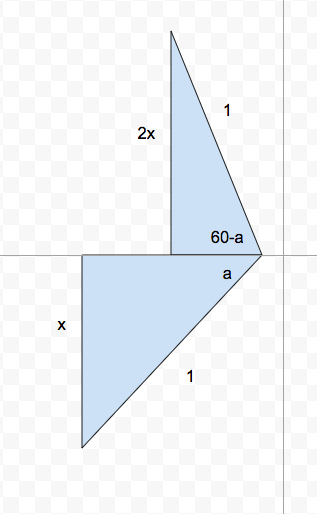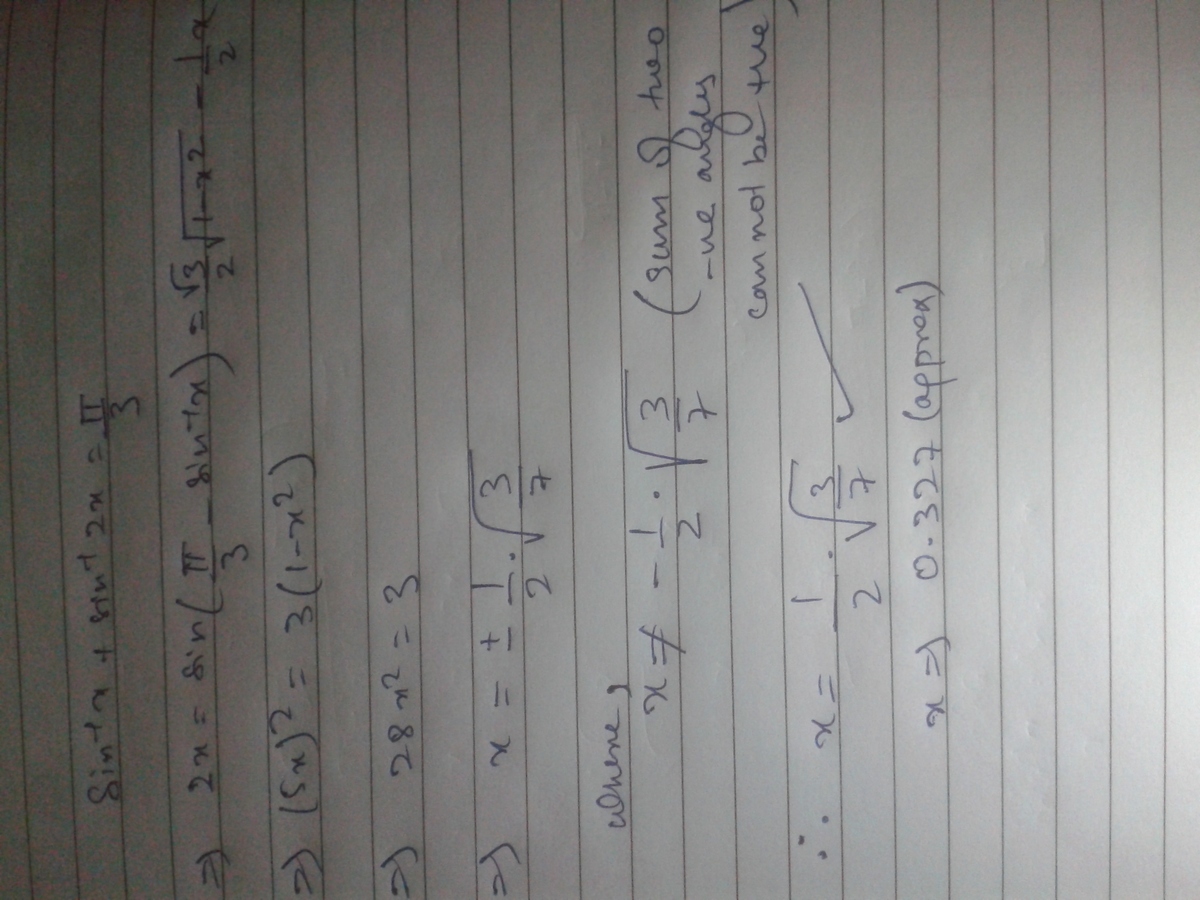Inverse trigonometry-JEE
Solve for x:
sin − 1 x + sin − 1 2 x = 3 π .
The answer is 0.3273.
This section requires Javascript.
You are seeing this because something didn't load right. We suggest you, (a) try
refreshing the page, (b) enabling javascript if it is disabled on your browser and,
finally, (c)
loading the
non-javascript version of this page
. We're sorry about the hassle.
3 solutions
We can consider two Right Triangles as shown in the diagram, both with a hypotenuse of 1 and both share a side on the same line. The opposite side of one Triangle is x and the opposite side of the other Triangle is 2 x . Since a r c s i n ( x ) + a r c s i n ( 2 x ) = 6 0 ° , the angle between the hypotenuses is 6 0 ° . If the angle opposite to x is a and the angle opposite to 2 x is 6 0 − a , 2 s i n ( a ) = s i n ( 6 0 − a ) . Expanding s i n ( 6 0 − a ) and using the pythagorean identity to substitute c o s ( a ) with the square root of 1 − s i n ( a ) 2 , we get s i n ( a ) = 0 . 3 2 7 = x , which is the final answer.


Let sin − 1 x = α ⇒ sin α = x
And, let sin − 1 2 x = β ⇒ sin β = 2 x
Then, we have, α + β = 3 π and sin α = x and sin β = 2 x .
So, cos α = 1 − sin 2 α = 1 − x 2
And, cos β = 1 − sin 2 β = 1 − 4 x 2
So, now, cos ( α + β ) = cos 3 π
⇒ cos α cos β − sin α sin β = 2 1
⇒ ( 1 − x 2 ) ( 1 − 4 x 2 ) − 2 x 2 = 2 1
⇒ ( 1 − x 2 ) ( 1 − 4 x 2 ) = 2 4 x 2 + 1
⇒ 1 − 5 x 2 + 4 x 4 = 4 1 6 x 4 + 8 x 2 + 1
⇒ 4 − 2 0 x 2 + 1 6 x 4 = 1 6 x 4 + 8 x 2 + 1
⇒ x 2 = 2 8 3
⇒ x = 2 8 3 = 0 . 3 2 7 ( a p p r o x . )